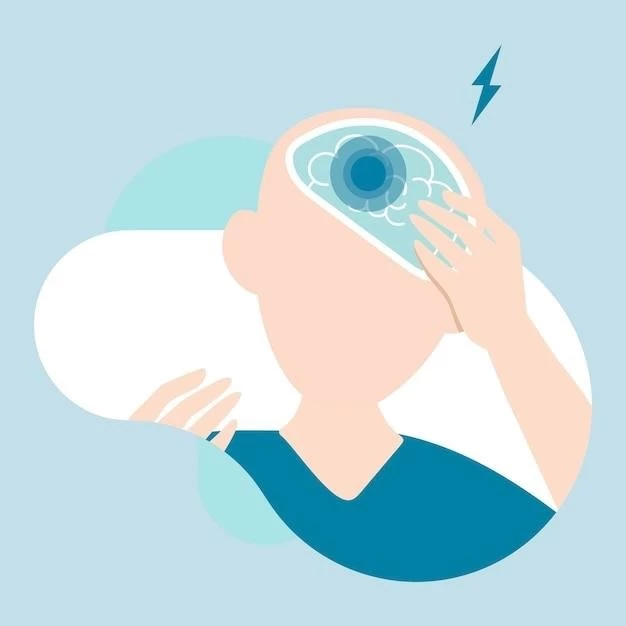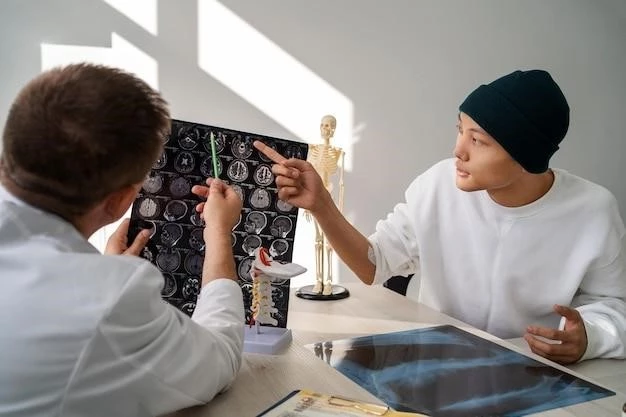Understanding the causes of craniosynostosis and available treatment options is key for managing this condition effectively.
Understanding Craniosynostosis
Craniosynostosis is a condition where the sutures in an infant’s skull close too early‚ leading to abnormal skull growth. This can result in head shape abnormalities and potential complications. Understanding the signs‚ symptoms‚ and causes of craniosynostosis is crucial for early detection and intervention. If you suspect your child may have craniosynostosis‚ consult with a pediatric specialist for a thorough evaluation and appropriate treatment plan. Early diagnosis and treatment can help ensure optimal outcomes for your child’s cranial development.
Treatment Options
When it comes to treating craniosynostosis‚ the main approach is surgical intervention to correct the premature fusion of the skull sutures. The specific surgical procedure will depend on the severity of the condition and the affected sutures. Your child’s medical team will discuss the various surgical options available‚ including minimally invasive endoscopic procedures or traditional open surgery. It’s important to follow your healthcare provider’s recommendations and participate in post-operative care to ensure the best possible outcome for your child’s cranial development. Discuss any concerns or questions you have about the treatment options with your healthcare team for comprehensive support.
Contractures in Craniosynostosis Patients
Understanding contractures in craniosynostosis patients is essential for comprehensive care and treatment planning.
Contractures Overview
Contractures in craniosynostosis patients refer to abnormal shortening or tightening of muscles‚ tendons‚ or other tissues‚ leading to restricted movement and potential deformities. These contractures can impact the mobility and development of affected areas‚ requiring specialized management to prevent long-term complications. Early detection of contractures through regular evaluations by a healthcare provider is crucial. Treatment approaches‚ such as physical therapy‚ stretching exercises‚ or surgical interventions‚ may be recommended based on the severity of the contractures. Collaborate closely with your healthcare team to address contractures effectively and optimize your child’s quality of life.
Treatment Approaches
Addressing contractures in craniosynostosis patients requires a multidisciplinary approach involving healthcare professionals like physiotherapists‚ occupational therapists‚ and surgeons. Treatment options may include targeted stretching exercises‚ bracing‚ splinting‚ or surgical release procedures to improve range of motion and functionality. Collaborate closely with your child’s healthcare team to develop a personalized treatment plan tailored to their specific needs and goals. Regular monitoring and therapy sessions are essential to track progress‚ adjust interventions as needed‚ and promote optimal outcomes for contracture management. By taking proactive steps‚ you can help enhance your child’s comfort‚ mobility‚ and overall well-being.

Cleft Palate and Craniosynostosis
Explore the connection between cleft palate and craniosynostosis for a comprehensive understanding of these conditions.
Connection Between Cleft Palate and Craniosynostosis
The connection between cleft palate and craniosynostosis involves shared genetic factors that can contribute to the development of both conditions. Understanding this link is crucial for early detection and comprehensive treatment planning. Individuals with both cleft palate and craniosynostosis may require specialized care from a multidisciplinary team of healthcare professionals to address the unique challenges associated with these concurrent conditions. Consult with specialists in craniofacial surgery‚ genetics‚ and speech therapy to create a tailored treatment approach that considers the complexities of cleft palate and craniosynostosis; By addressing these conditions holistically‚ you can support optimal outcomes for your child’s health and development.
Integrated Treatment Plans
Integrated treatment plans for individuals with both cleft palate and craniosynostosis involve a coordinated approach to address the unique challenges presented by these conditions. Collaborating with a team of specialists‚ including craniofacial surgeons‚ speech therapists‚ genetic counselors‚ and pediatricians‚ can ensure comprehensive care tailored to the specific needs of each patient. By integrating treatment strategies that consider both cleft palate repair and craniosynostosis management‚ individuals can benefit from optimized outcomes and improved quality of life. Regular follow-ups‚ therapy sessions‚ and evaluations are essential components of integrated treatment plans to monitor progress‚ adjust interventions‚ and provide ongoing support for holistic care. Embracing a multidisciplinary approach is key to promoting the well-being and development of individuals with these complex conditions.
Surgical Options for Craniosynostosis
Learn about the various surgical procedures available to address craniosynostosis for informed decision-making.
Types of Surgical Procedures
Understanding the types of surgical procedures for craniosynostosis is crucial. Procedures like cranial vault remodeling or endoscopic craniosynostosis repair are common interventions to correct the premature fusion of skull sutures. Each procedure has specific benefits and considerations‚ impacting factors like recovery time and overall outcomes. It’s essential to consult with a craniofacial surgeon to discuss the best surgical approach tailored to your child’s condition. By being well-informed about the available options and their implications‚ you can actively participate in decision-making regarding your child’s surgical treatment for craniosynostosis. Trust your healthcare team to guide you through this process and support you every step of the way.
Factors Influencing Surgical Decision
Several factors play a role in determining the most suitable surgical approach for craniosynostosis. The age of the child‚ the extent of skull fusion‚ potential risks‚ and the expertise of the surgical team are critical considerations. Additionally‚ the specific type of craniosynostosis and associated symptoms will influence the surgical decision-making process. Collaborate closely with your healthcare providers to evaluate all these factors and make an informed decision about the most appropriate surgical intervention for your child. Effective communication‚ thorough evaluations‚ and shared decision-making with your healthcare team are essential for ensuring the best possible surgical outcome for craniosynostosis treatment. Trust in the expertise and guidance of your medical professionals to support you throughout this process.
Complications of Craniosynostosis Surgery
Understanding potential complications post-surgery is crucial for proactive management and optimal recovery.
Common Complications
After craniosynostosis surgery‚ common complications may include infection‚ bleeding‚ scarring‚ or changes in skull shape. Monitoring for abnormal symptoms like fever‚ swelling‚ or drainage is essential for early detection. Follow post-operative care instructions diligently‚ and promptly report any concerns to your healthcare provider. Ensure regular follow-up visits to address any complications effectively. By staying vigilant and proactive‚ you can help mitigate common complications and support your child’s smooth recovery from craniosynostosis surgery.
Strategies for Prevention and Management
Implementing strategies for the prevention and management of complications post-craniosynostosis surgery is crucial for your child’s recovery. Follow all post-operative care guidelines provided by the medical team meticulously. Keep the surgical site clean and dry‚ monitor for any signs of infection‚ and adhere to scheduled follow-up appointments. Engage in open communication with healthcare providers to address any concerns promptly. Encourage a healthy and supportive environment for your child’s healing process. By being proactive and vigilant‚ you can play a vital role in preventing and effectively managing complications associated with craniosynostosis surgery‚ promoting optimal outcomes for your child’s well-being.
Genetics of Craniosynostosis
Understanding the genetic basis of craniosynostosis is essential for comprehensive management and treatment.
Genetic Basis of Craniosynostosis
The genetic basis of craniosynostosis involves mutations that affect the development of skull bones. Understanding the genetic factors contributing to craniosynostosis can help determine recurrence risks and guide personalized treatment plans. Genetic testing and counseling play a vital role in identifying specific gene mutations and providing individuals and families with valuable information about the condition. Consult with a genetic counselor or specialist to explore genetic testing options and implications. By unraveling the genetic basis of craniosynostosis‚ healthcare providers can tailor interventions to address underlying causes‚ leading to more effective management and improved outcomes for individuals affected by this condition.
Research and Advances
Ongoing research and advances in the field of craniosynostosis provide hope for improved understanding and treatment outcomes. Scientists and healthcare professionals are continually exploring innovative approaches‚ such as gene therapy and regenerative techniques‚ to address craniosynostosis at a molecular level. Stay informed about current research findings and clinical trials to access potential novel treatments and interventions. Engaging with support groups and research initiatives can also offer valuable resources and communal support. By staying involved in the latest advancements and contributing to research efforts‚ you can help shape the future of craniosynostosis management and contribute to enhanced care options for individuals affected by this condition.
Speech Difficulties in Cleft Palate Patients
Explore speech challenges and effective interventions in cleft palate patients for enhanced communication skills.
Speech Challenges Associated with Cleft Palate
Individuals with cleft palate may experience speech challenges due to anatomical differences affecting airflow and sound production. These challenges can include articulation difficulties‚ resonance issues‚ and language delays. Early intervention with speech therapy is crucial to address these challenges effectively. Speech-language pathologists specialize in evaluating and treating speech disorders in cleft palate patients‚ helping improve articulation‚ language development‚ and overall communication skills. Collaborate closely with a speech therapist to create a tailored treatment plan that addresses your child’s specific needs and maximizes their speech potential. Consistent practice‚ patience‚ and support from both healthcare providers and caregivers are key to overcoming speech challenges associated with cleft palate.
Speech Therapy and Interventions
Speech therapy plays a vital role in addressing speech difficulties in cleft palate patients. Therapeutic interventions focus on improving speech articulation‚ language skills‚ and resonance through tailored exercises and techniques. Speech therapists work collaboratively with patients to develop personalized therapy plans that target specific communication challenges. Consistent practice both in therapy sessions and at home is essential for progress. In addition to speech therapy‚ assistive technologies and augmentative communication tools can further support individuals in enhancing their speech abilities. Embrace the guidance and expertise of speech therapists to explore effective interventions and empower cleft palate patients in achieving clear and confident communication.
Impact of Craniosynostosis on Child Development
Learn about the developmental implications of craniosynostosis and proactive interventions to support growth.
Cognitive and Behavioral Effects
Craniosynostosis can impact a child’s cognitive development and behavior due to potential pressure on the growing brain. Early identification of cognitive and behavioral challenges is vital for timely intervention. Work closely with healthcare providers and specialists to monitor your child’s cognitive milestones and address any developmental delays. Behavioral therapies‚ educational support‚ and individualized interventions can help enhance cognitive function and promote positive behaviors. By proactively addressing cognitive and behavioral effects of craniosynostosis‚ you can facilitate your child’s overall development and well-being. Stay attuned to your child’s needs and seek professional guidance to optimize their cognitive and behavioral outcomes.
Support Systems for Child Development
Establishing robust support systems is crucial for promoting optimal child development in craniosynostosis cases. Collaborate with healthcare professionals‚ educators‚ therapists‚ and support groups to create a multidisciplinary network focused on addressing your child’s unique needs. Accessing early intervention services‚ educational resources‚ and emotional support can significantly benefit your child’s growth and adaptation. Engage in open communication with your child’s healthcare team and educational providers to ensure a coordinated approach to care. By building a strong support system that prioritizes your child’s holistic development‚ you can empower them to thrive and reach their full potential despite the challenges posed by craniosynostosis.
